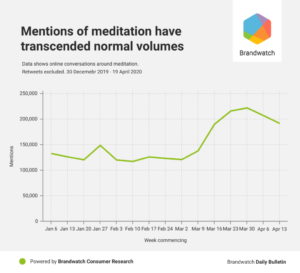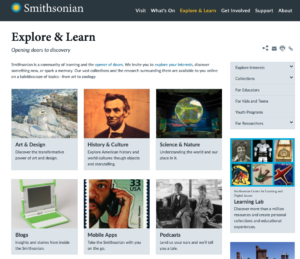April 27, 2020
For many that have decamped to home working, repurposed content has served as a filler for the last month. Makes sense whilst we settled in. But your customers crave more and the opportunity to connect, entertain or be useful is just missed if you drag out every old piece of content and just re-share.
But there are challenges to creating content. Many brands are working with reduced resources, they’re underfunded, and difficulties abound in getting new and fresh assets. There are even more challenges when you look at what’s changed in social. Audiences are swinging wildly between topics.
The traditional rhythms for social content process, such as Hygiene, Hub and Hero, no longer work. Brands can (and many are) move to a real-time content model – Listening to audiences, creating assets and jumping on the moment. But this is resource hungry. It requires team coordination not available to a lot of companies. It can also be exhausting!
More importantly, right now, it is quality over volume that will matter. People have time to scrutinise what you post. You need to make sure it is the best it can be.
Make it better, faster and more efficient
You can speed up creativity. You can increase relevance. And you can get production processes working like a well-oiled machine. To do this you need clarity and focus. You need to put in place a framework made of three elements:
- Lenses
- Filters
- Sparkers
The aim of this framework is to let you change gears fast. It’s the guide rails that will allow you to switch topic without blinking and turn production a full 90 degrees to get out content that hits social with a splash. Let’s look at these framework elements then:
Lenses are your clear view of your audiences
Your audience behaviours, attitudes and values have changed. If you watched Belle Lawrence’s live a couple of weeks ago, you will understand that our audiences are now tribes. People are falling into communities driven by specific values sets. And brands have a more fractured audience profile that clings tightly to its community.
For each tribe you create a lens. You identify where they playing on social (people have found new social channels), what matters to them, what they are interested in, and what are their pain points or passions.
This is not a full persona profile. More a set of bullet points of tribe features. With this in place, you align your brand purpose to the lenses.
Let me explain with an example: if you are a media company who is all about sharing information resources, you look at where that might fit today. For the tribe that is ‘news hungry’, you might focus on providing fact-based analysis to help them digest the news. However, for a ‘fun and entertainment’ tribe, you may deploy lists and reviews on films or books. You get the gist.
Think beyond the obvious too. You can’t just be all about one thing. Because your audience is not that way. Don’t be tempted to jump on bandwagons such as the Thursday NHS clap – if you have no right to be there.
Note: you may find there are some tribes it is better not to communicate with, just now. Be brave and don’t spam them. There is likely to be some of our audiences that have bigger priorities than our brand.
Your filter is based on your lenses
The filter is the part of the framework where you test each piece of content to ensure you stay on track. It allows you to jump into the changing social themes and topics without having to rethink your whole approach.
Basically your filter is a set of rules you create to ensure that you stick to your content goals. For example:
- Does this content communicate our distinct value?
- Is the content unique or does it have a unique twist?
- Is the content being useful or helpful to your tribes?
- Does the content matter to the audience or tribe you want to reach?
- Does the content meet the tone of your tribe?
Filters will always be bespoke to your brand and your audience.
 For example, according to Brandwatch’s Covid 19 resource website ,which looks at worldwide social media conversations, mentions of mindfulness and meditation massively increased at the beginning of March. They are tailing off now, but the conversation has switched to yoga mats which is rising fast – very fast.
For example, according to Brandwatch’s Covid 19 resource website ,which looks at worldwide social media conversations, mentions of mindfulness and meditation massively increased at the beginning of March. They are tailing off now, but the conversation has switched to yoga mats which is rising fast – very fast.
Using this filter, you’ll be able to switch the conversation and create content that is relevant to the change without stepping outside your brand purpose.
Let’s say a gym company wants to increase membership when this is over. They identify a lens of people interested in wellbeing. This includes “occasional gym users” as well as regulars. Their filter is to offer step by step guidance and be seen as an authority on mind and body. They would start with content for beginners in mediation, with daily guides and audiograms. As the conversation switched to yoga mats, they will provide comparisons and best deals around the web. All whilst positioning themselves as unbiased experts. Simples!
You have to be disciplined though. If your content idea doesn’t fit the audience or your brand, then it does happen. But if you get this right it will shorten sign-off on content and allow you to be agile and move quickly as the conversation changes.
The final part of the framework is sparkers
Sparkers are idea starters that help you to be creative with content at speed or shatter your content to get more bang for your buck. For instance:
- What partnerships, advocates or influencers can you build stronger relationships with that would hone down on your tribes and core filters?
- What do you have a as business that would be useful or valuable? The Smithsonian is giving away images for everyone to use – free of charge. Nasa created a resource for Earth day 2020, stuffed with insight and downloads (including ringtones that are awesome!).
- What content is out there that you can curate that fits your filters?
- How can UGC fit into your framework?
- How could you use your focused thinking to create quality formats such as AR or filters (given Snapchat says it’s seen a 37% increase in snaps using AR during late March with over 75% of its users engage with its various AR tools every day)?
Now you can continue to pepper your posting plans with repurposed assets. But this time through the filter, so you have clarity of purpose. Then you can turn images into gifs, turn video into podcast. Or you can tilt your content to fit your tribe’s mood. Like Travel Zoo’s fantastic creation of the Virtual Vacation
It is work up front to create the framework. But once in place it will help you be more creative, more focused on your audience and ensure you deliver relevant content.